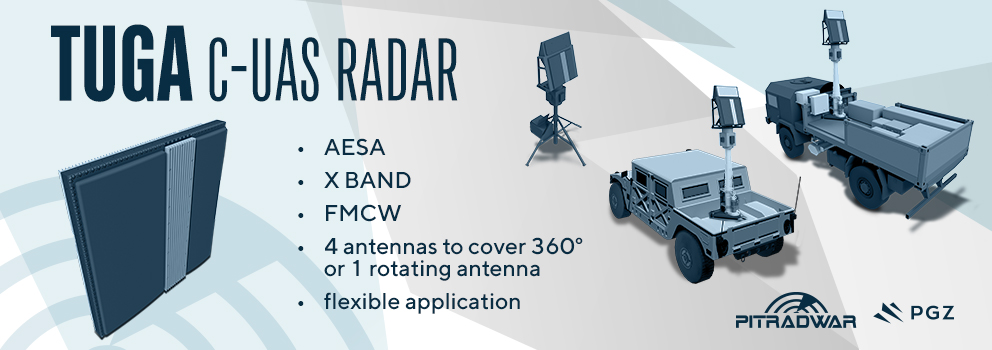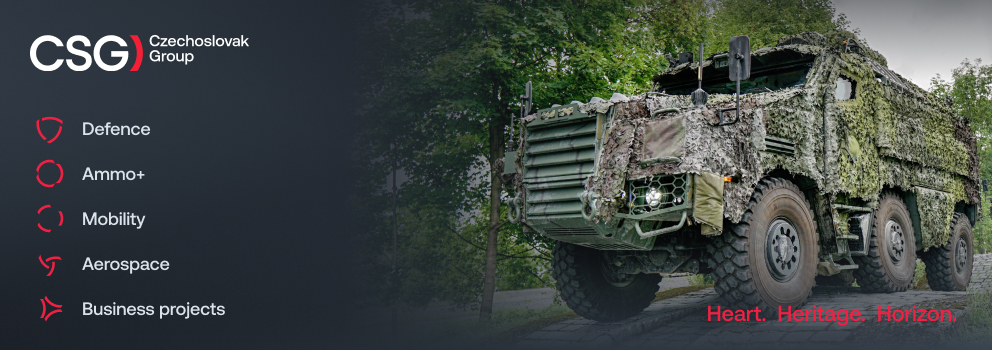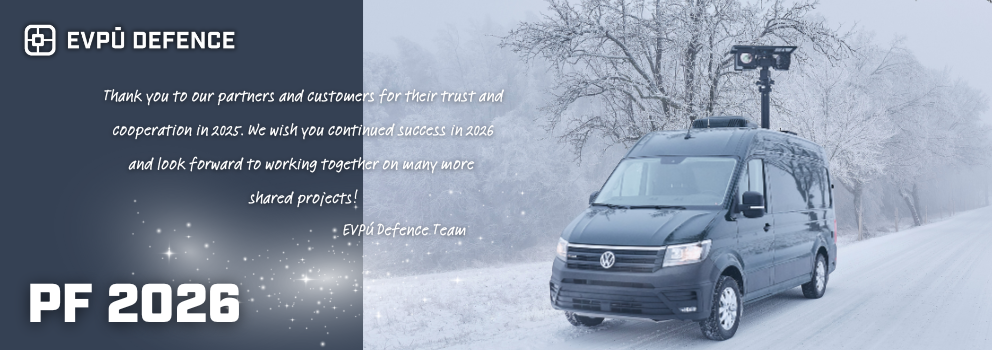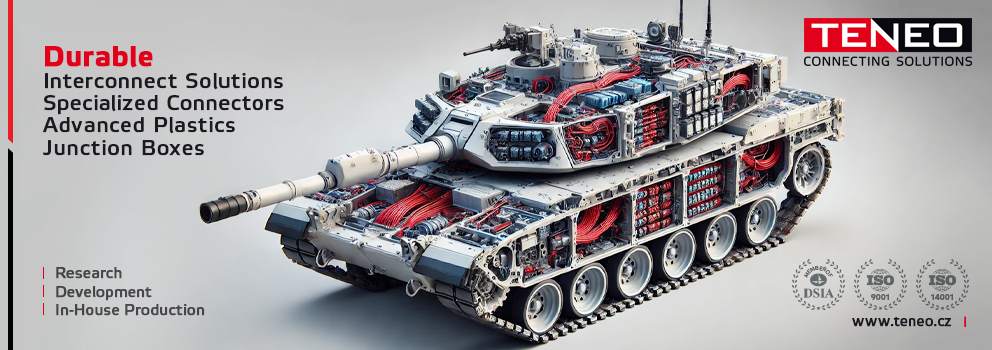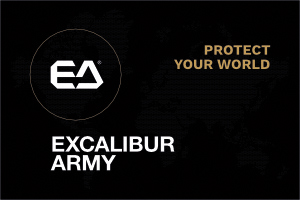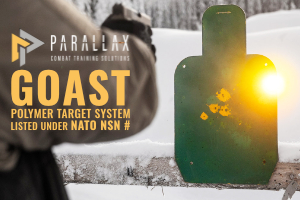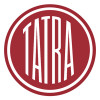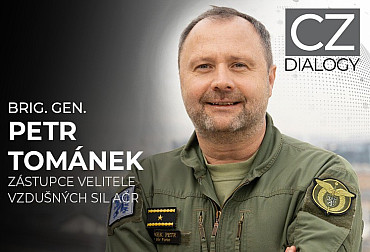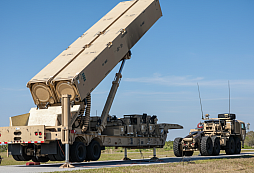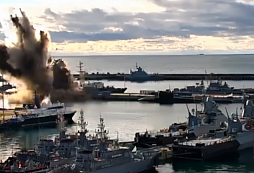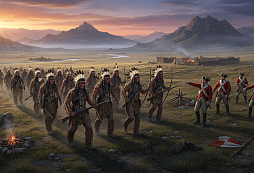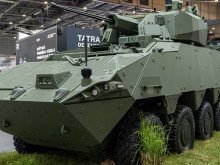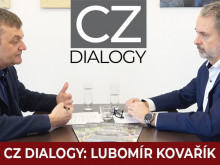Gen. Josef Trojánek: I don't like pigeonholing. Every generation has its own specific characteristics
Since the beginning of this year, the Czech Army Ground Forces have a new commander, Major General Josef Trojánek. He was promoted to this rank at a recent ceremony marking the 80th anniversary of the end of World War II. General Trojánek has a lot of work ahead of him in his new position, particularly in terms of modernising the ground forces. A significant increase in capabilities is expected, for example, in the artillery, with the introduction of new CAESAR weapon systems, including a fire control system. Our only heavy brigade, the 7th Mechanised Brigade, is switching to the Leopard 2 tank platform and modern Swedish CV90 tracked infantry fighting vehicles. The existing Pandur II 8x8 CZ vehicles serving with the 4th Rapid Deployment Brigade will then probably be replaced by new wheeled armoured vehicles. A key parameter for the fulfilment of the tasks of the ground forces is the personnel issue, in particular improving conditions of service in the army, retaining existing experienced professionals and, at the same time, streamlining the recruitment of new soldiers. These were not the only topics we discussed in the following extensive interview with General Josef Trojánek.
Video: Interview with General Josef Trojánek, Commander of the Czech Army Ground Forces / CZ DEFENCE
General, some time ago you presented your vision and priorities for the Czech Army's Ground Forces. How do you intend to achieve these goals?
The vision is essentially simple. We would like to raise the prestige and credibility of the ground forces within the Czech Army. We represent 63% of the Czech Army, so in my opinion we are one of the main players, and our requirements for defining our needs should be something that determines the direction of our army. My vision is to be a full-fledged player within the Czech Armed Forces, and this vision then determines a number of priorities that we want to focus on.
I will mention one problem right away, and that is recruitment. What options do you have at the level of the Ground Forces Command to make military service more attractive? Is there anything above and beyond the standard that you could offer new soldiers?
I think these are two separate areas. On the one hand, we are talking about recruitment, where we can see large campaigns in the media to boost interest in serving in the Czech Armed Forces. Some benefits are being increased, although that is probably not the right word, for new members of the Czech Armed Forces. As ground forces, we are interested in how to stabilise the personnel we currently have. The occupancy rate is not entirely satisfactory. The outflow of personnel from the ground forces is still ongoing, and we are asking ourselves quite intensively: How can we stop this? To be honest, we don't have many tools at our disposal. At the very least, we can support military employment in the area of organisational culture development. People can treat each other with respect and professionalism. Soldiers will know that their commanders are aware of the problems and are trying to solve them. Then there are some limited options for improving the attractiveness or quality of military life in garrisons, albeit to a limited extent. These are small things, but even they send a message that we are working on this problem and trying to solve it.
Which departments are in the worst shape? Which professions or areas of expertise are causing you concern?
The army is about combat readiness. We are ground forces, which means that combat readiness or preparedness to perform operational tasks should be somewhere on a pedestal. To be able to do this, we must have the basic building block of ground forces, and that is the soldier, the fighter. We currently have relatively sophisticated weapon systems and are planning relatively intensive acquisitions in the future, whether it be main battle tanks, new artillery, or replacements for the Pandur wheeled platform. In addition to combatants, we therefore need soldiers who are proficient in these modern systems, both in manoeuvre units and in combat support and security units. At present, there are two categories that we are most lacking: drivers and operators of this equipment, plus soldiers and fighters.
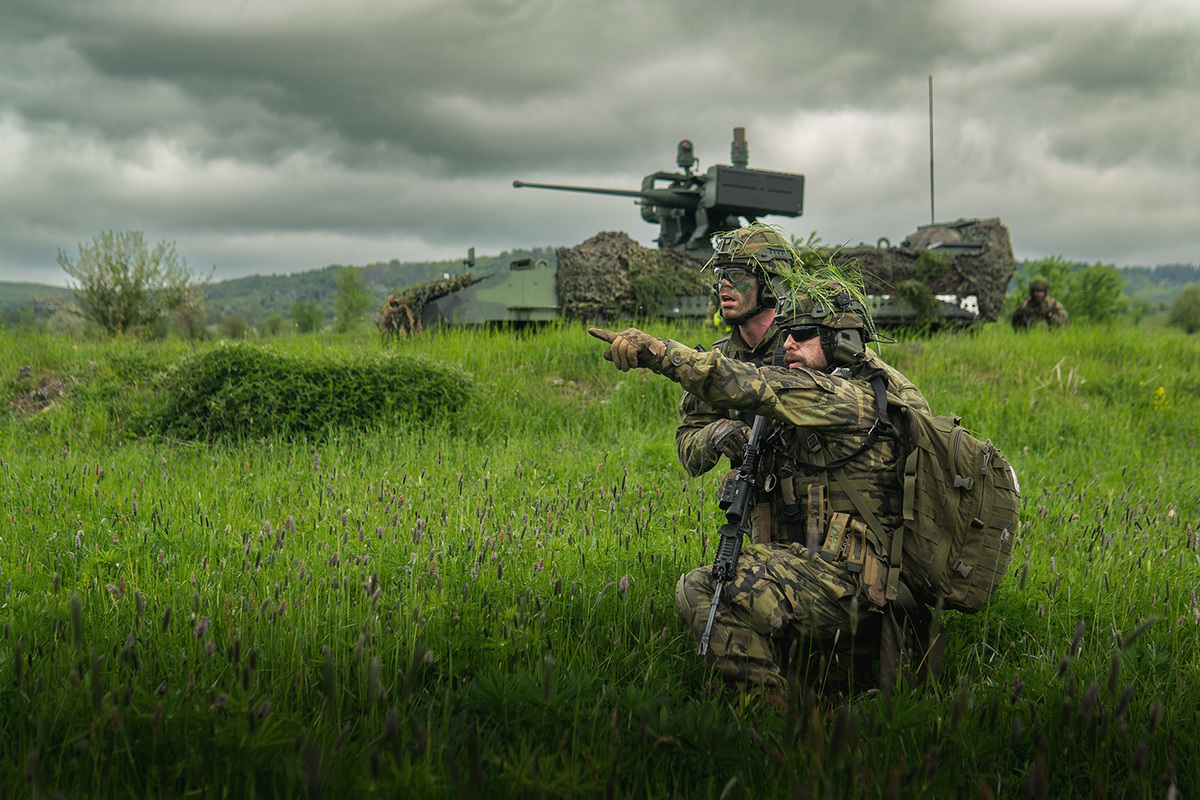
When viewed through the lens of Generation Z, does communication with this target group bring about any changes, different needs, or a different way of thinking?
Probably yes. But it is important to realise that the current staff are not yet entirely Generation Z. We work with an average age of 36 and 37. That is our current staff, and we have to work with them. And, of course, we have to prepare for Generation Z. I don't like pigeonholing at all. Every generation has its own specifics. We certainly had them too, without being dogmatically classified into any category. I think it's about knowing what people expect. Being aware of what we can offer them. And that brings us back to communication and military professionalism, in a figurative sense, some kind of human decency. I am convinced that if we treat people fairly and decently, then we don't have to dogmatically debate whether they are Generation Z, X, Y or any other.
Has the soldier changed during the time you have been serving in the army?
Without a doubt. I have been serving since 1993, when I graduated from the Military University of Ground Forces in Vyškov, and even that period has accelerated tremendously, with the transfer of information becoming much faster. We used to search for information in a complex way, somewhere in the imaginary ether, but now soldiers have it in real time. This again emphasises the importance of communication, both outwardly, but we are primarily interested in communication inwardly. And it's not just about communicating positive topics; we also have our problems and we know about them. Some are solvable, some are partially solvable, and some are – let's be honest – unsolvable. But we must also be able to communicate these negative topics.
When we talk about problems, one of them is the procurement of equipment. This problem has persisted in the army for a long time. To what extent should soldiers be allowed to procure their own equipment, for example?
My view is quite simple. As far as small arms are concerned, the situation is relatively favourable. We have small arms. If we are talking about protective ballistic equipment, gear and the like, then either we as an organisation are able to provide this material to soldiers, or if we are not able to do so, we cannot seek to obstruct soldiers from replacing this material with their own resources. In my opinion, it would be very unwise to prevent them from doing so, but on the other hand, it must be said that some standards need to be set. Fortunately, all military equipment is camouflaged, colour-coded and so on. You can always tell that it is military equipment. So, in my opinion, we should allow it if we are unable to provide it, and, to be honest, this has been happening for many years. Commanders at the tactical level allow this and try to find alternative solutions. I am not saying that this is ideal, but they have their own decentralised resources. In many areas where they can, they are trying to solve the problem.
What is the current situation with ground forces in this area?
If I don't want to use the word catastrophic, then it's bad. We all realise that. I still advocate the idea that soldiers are the building blocks of ground forces. From these individuals, we will then build sections, squads, platoons, companies and higher organisational units. Every soldier must have a uniform, boots, a helmet, ballistic protection, communication equipment, protective equipment – whether it be goggles or elbow and knee pads – and that is the be-all and end-all of the matter. We cannot do without it. This is holding us back terribly, because if we want to set basic tactical standards for the use of equipment and weapons, we need to teach soldiers how to use them based on certain principles. If something falls out of the mosaic, it sets us back several steps. And from the level of the ground forces, we are currently unable to do much about it, even though that may sound like an excuse. We are monitoring the issue very closely. We are trying to at least find out when deliveries will be made so that we are prepared and able to distribute everything to the units immediately. But first, we need to physically have the material.
Voluntary military training for secondary school students is one of the most successful projects. How do you rate it and do you have any plans for its further development?
One thing must be understood. The Ground Forces organised voluntary military training in 2024, which can now be described as a pilot project, and the entire Czech Armed Forces are currently involved. This time, the Territorial Forces and the Air Force will participate, and the Military Academy in Vyškov will be involved in a relatively significant way. I think with a capacity of around 300 soldiers. We have increased the capacity to 800, which is a significant increase compared to last year. As ground forces, we have tried to provide as much information as possible so that further voluntary military exercises can run as smoothly as possible. We always do a quick evaluation and then we do an evaluation after a certain period of time, including all aspects, such as logistics and other security measures. At least the initial reactions were very positive, and some high school students have joined the professional military service. On the other hand, in order to obtain relevant data, it will probably take more than one or two years. We will have to wait three, four, or five years and calculate how many people we used for security, what the costs were, how many people went through voluntary training, and how many people not only joined the army but are still serving in it. So I think it is a little too early for relevant statistical data.
However, this may have a secondary effect in that society as a whole will become more resilient. This includes people who do not join the army.
Of course, in the past, one of my colleagues said that even a bad experience is an experience. When I transform that, at least tens or hundreds of people go through basic training. So there is definitely a positive impact in this regard. I don't know if it will affect the whole society, but if we take 2024 and 2025, there will be a thousand graduates. When someone joins the army or active service, I think that's great news. And the rest can at least spread positive PR about the Czech Army.
Current conflicts bring new tactics and new technologies. As ground forces, do you have the opportunity to incorporate this knowledge into your training and operational outputs? And how is this managed?
A few months ago, we launched a project that we call ‘sharing’ or information sharing. We have the information, of course. But from my point of view, there is one problem: each community shares its own information, whether it be in the field of artillery, basic tactical procedures, the use of drones, electronic warfare, and so on. So our goal is to consolidate these individual inputs, to create something like a unified portal where this information would be centrally accessible. That's the first thing. And then, of course, the second thing is that this information is also disseminated through various, let's say, bilateral experiences. For example, we are involved in the EUMAM mission to train the Ukrainian armed forces.
Is there a chance to communicate with Ukrainian soldiers?
Of course, there is an opportunity to communicate with them and exchange experiences. It was more intense at the beginning, of course, but as the conflict continues, we are seeing more newcomers than experienced soldiers. However, the artillery community, the engineering community and so on have the information and can share it. I think the main challenge for the army – not just the Czech Army Ground Forces – will be to give it some order and, let's say, doctrinal support so that it is centrally managed. At the moment, this is not entirely the case. We are aware of this in the ground forces and would like to coordinate some things, at least at our level. We would like to set priorities and standards. I would like to emphasise one more thing here. We have very experienced commanders at the tactical level. These are people who have the necessary initiative, drive and determination, and they do not wait for centralised management, but try to implement things in practice almost immediately – at least in tactical procedures or something similar.
I am interested in whether there are any new tactical approaches based on the experience gained in the war in Ukraine, where new technologies, artificial intelligence and so on are being used. Has anything changed?
Of course, almost everything has changed. The operational environment has changed drastically. And I think that many soldiers who serve like me couldn't even imagine this three years ago. The technological boom on the battlefield is incredible. I think we can all see that. The introduction of drones and countermeasures are leading to, let's say, better use and so on. I think it's quite a challenge to keep up with the pace of these changes that are currently taking place on the battlefield.
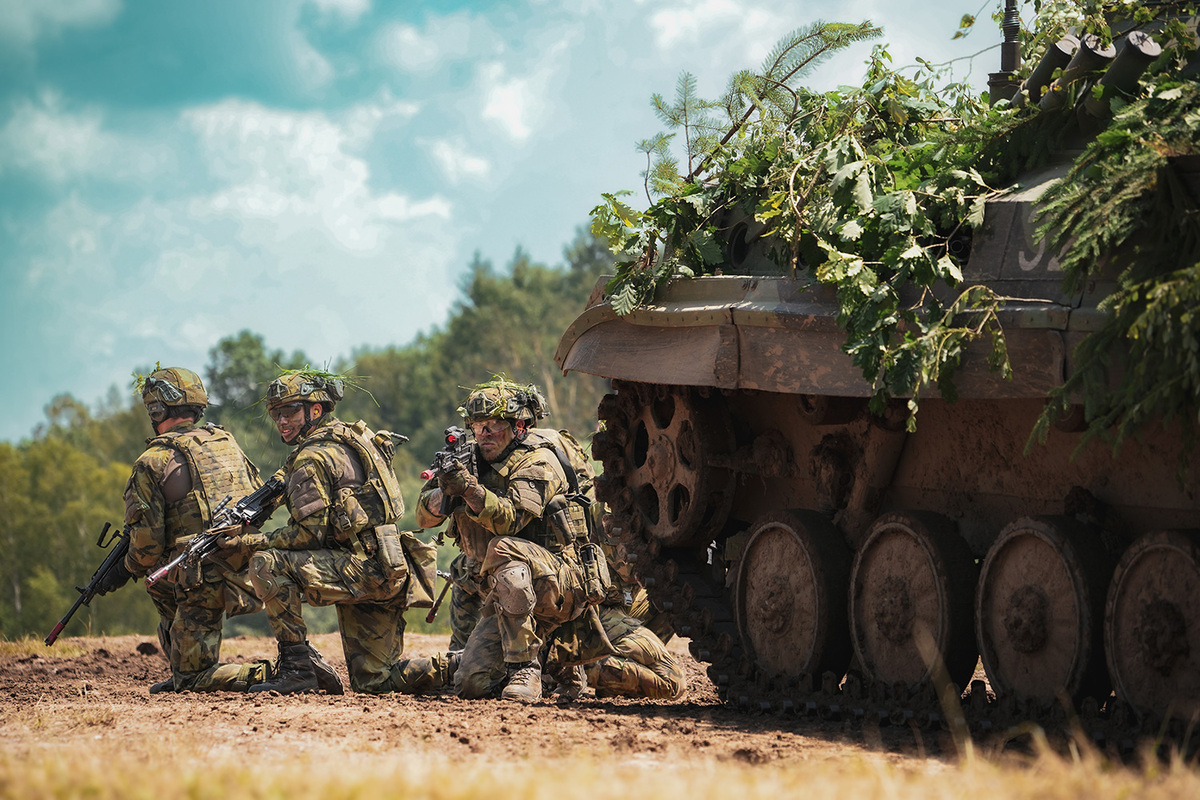
Is there any chance of integrating this into training so that soldiers can learn new procedures?
Some things are indisputable. The entire concept of command posts, as we were used to it, has proven to be completely ineffective. This means that we must transition from our large command posts to small mobile ones that we can conceal, using civilian infrastructure and so on. The impact is immediate. And battalion commanders, for example, are able to deal with this at their own level, albeit, I admit, in a somewhat improvised manner. And it is, of course, very difficult to respond to the pace of technological change, because even the acquisition processes that are implemented in the Czech Army take some time. Although we have experience with drones from the current armed conflict, civil legislation does not allow us to implement these changes as quickly as we would like. But to conclude in some way, the information is available and we are trying to set up a system so that we can share it within the ground forces. Once we have this system in place, we will try to organise and standardise the information that is currently being shared and the experience that is being used.
Let's stay with drones used by ground forces for their work. Do you anticipate any acquisition of a larger number of drones for more efficient ground forces operations?
Our fleet includes the 533rd Unmanned Aerial Vehicle Battalion, which currently has several mini and small drones. I don't want to go into details about acquisitions, but some are in the works. In the mini category, a relatively large purchase is being prepared so that the drones will not only benefit one unmanned aerial vehicle battalion, but will also be available to manoeuvre battalions. Acquisitions are also being prepared in the small category.
Is it appropriate to consider so-called simulation training in the context of drones? This means that drones would not appear in the air, because we have problems with legislation, but training would take place on computers, for example?
This is certainly something to consider. It is definitely the cheapest option. I am not an expert on drones, so I would not like to give any misleading information here. In our country, the intelligence security section is currently in charge of this area, which naturally works closely with both the ground forces and other types of forces. We will wait a while and see what the concept for the general use of drones will be, and not just drones, but also anti-drone defences and the like.
Let's move on to cyber security. How does cyber protection for ground forces and ground operations currently work?
We are trying to introduce classified systems on a massive scale so that we are able to transfer classified information, and I think that to a certain extent and at certain levels of command and control, we are succeeding. Unfortunately, we are not succeeding at the most basic level of battalions, companies and platoons. There, we still have unclassified communications in many cases. Within the ground forces, we are creating two brigade task forces. These are specially organised military units, one of whose elements is members of the information and cyber forces, who are experts in cyber security. What worries us most at the moment is the awareness of the need for security. If soldiers continue to use social networks, mobile phones and so on during training, they will acquire bad habits that will clearly come back to haunt us in combat, as the war in Ukraine shows.
Can this be resolved through agreement or training so that soldiers do not use mobile phones?
This can be solved through education, training, explanation and, above all, a high level of awareness among users.
There is a lot of talk about the Czech Army's new tasks including providing Host Nation Support. How do the tasks of the Czech Army's Ground Forces fit into this?
Very marginally. As I mentioned, we are setting up two brigade task groups, which is quite a large task force. However, we have units that provide Host Nation Support. We have a deployable force support battalion, which will be expanded into a regiment in the future to cover all the tasks assigned to it. But Host Nation Support is not just about allocating individual resources to ensure the movement or presence of units on our territory. It involves a whole range of aspects that are not currently just military issues. Soldiers need somewhere to be treated, to rest, to refuel, and so on. But back to your question. If we have the manpower and resources available, we are able to assist according to the needs and capabilities of the Czech Army. However, having a strictly defined task within the framework of House Nation Support is not currently a priority for the ground forces. Our priority is to prepare two brigade task forces for deployment outside the Czech Republic, and this must be understood. This is our primary task, and it takes up a significant amount of the ground forces' capacity.
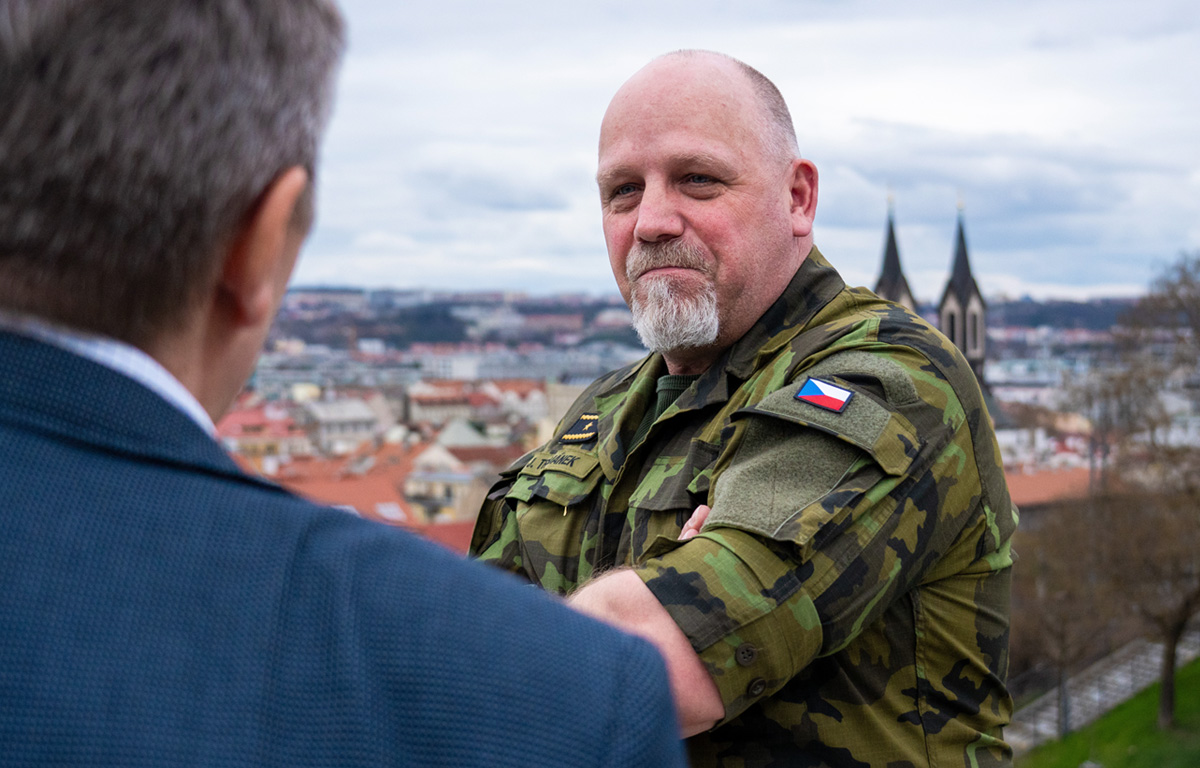
The ground forces cooperate very closely with the integrated rescue system. How would you assess the level of this cooperation? Do you see any potential for improvement?
There is always room for improvement. Historically, in the event of a need to strengthen the integrated rescue system, the army is able to respond relatively quickly and allocate the necessary forces and resources. The army's preparedness was confirmed, for example, by last year's floods. On the other hand, it must be said that any use of the army within the integrated rescue system always shows us where our strengths and weaknesses lie. We should be able to identify the negatives and definitely work on improvements for the future. Whether it be equipment, processes, management systems or coordination of activities.
Current conflicts are bringing a lot of new insights. What do you think ground forces will look like in the future, and what tasks should they be able to handle?
It is defined by KVAČR, which the Chief of the General Staff quotes quite often in various forums. This means that we should prepare for high-intensity conflict with a technologically advanced adversary equipped with nuclear weapons. And that basically says it all.
